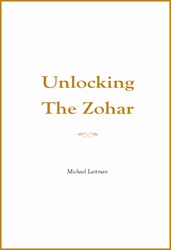Kabbalistic Texts Contain a Correcting Force
When we are studying the Kabbalistic sources like the Book of Zohar, we don’t actually “study” for knowledge, but we aim for those sources to influence us, to tune us towards similarity with their source.
In reading The Zohar, we must intend for the upper force to affect us. The Zohar is built in such a way that it oozes into us bit by bit. Time and time again, with the same intention to grow, we should let The Zohar affect us. Then we will feel how it leads us from darkness to light.
How the Request Process to Become Like the Properties of the Spiritual Reality Works
When this prayer in tears rises through those gates, that angel comes … whose name is Yerachmiel. He takes a prayer in tears, the prayer enters and becomes connected above, and the tears remain here, inscribed in the door that the Creator opens. The prayer in tears raises MAN for the correction of the Miftacha [Aramaic: key], to raise the Malchut to Bina, and therefore the prayer is answered and the tears remain inscribed on the door, causing there the mitigation of Malchut in Bina. Tearing comes from the word “mixing” because he drips and mingles the Malchut in Bina.
– Zohar for All, Pekudei [Accounts], Item 49
In this world, a person cries because he is sad, in pain, has no control over a situation, or feels small and weak. We cry when we are in a situation that we don’t know how to cope with—fate, chance, force majeure.
In the spiritual world, however, the state of “tears” is the most active of states. Throughout that state, we activate the entire mechanism of our correction and ascension.
“The prayer in tears raises MAN for the correction of the Miftacha [Aramaic: key], to raise the Malchut to Bina,” says The Zohar in the above excerpt. Miftacha, in Aramaic, means “key.” The tears open the gate to the spiritual world, through which we enter in order to correct our will, Malchut, to become a giver like the Creator, Bina. Although our desire is a desire to receive, and hence opposite from the Creator, we mitigate it with the intention to bestow, making it similar to the Creator.
The above excerpt also writes, “Therefore the prayer is answered and the tears remain inscribed on the door.” A prayer is a request to become similar to the Creator, and the tears are what keeps the door open. It follows that tears are an act that enables us to be similar to the Creator.
The Powerful Remedy Contained in the Book of Zohar
Being allowed to study the sublime matters, called “the wisdom of Kabbalah,” is only as a remedy, for they can bring one to desire and crave adhesion with the Creator … When one studies the sublime matters so they will bring one closer to sanctity, it causes the nearing of the lights. This means that this study causes one that through it, one will come to aim all one’s actions to be in order to bestow.
– Rabash, The Writings of Rabash, “Three Lines”
When we engage in The Zohar, all the lights and power hidden within it traverse us. Even if we still cannot detect or sense those things, they do travel through us, affect us, and change us. There is no other way to grow. It is like a baby who still does not understand how it grows and develops, but has an inner drive to run around from corner to corner to search, examine, and know everything.
It makes no difference what emotions our reading in The Zohar may evoke in us. At times it will be pleasant and at other times less so; at times we will laugh, and at times we will cry; at times we will be excited, and at times indifferent. Yet, in the end, only perseverance will yield results. We must let the power of The Zohar affect us so we may grow and thrive in spirituality.
 “Unlocking the Secret Power Contained in Authentic Kabbalistic Books” is based on the book, Unlocking the Zohar by Dr. Michael Laitman.
“Unlocking the Secret Power Contained in Authentic Kabbalistic Books” is based on the book, Unlocking the Zohar by Dr. Michael Laitman.

